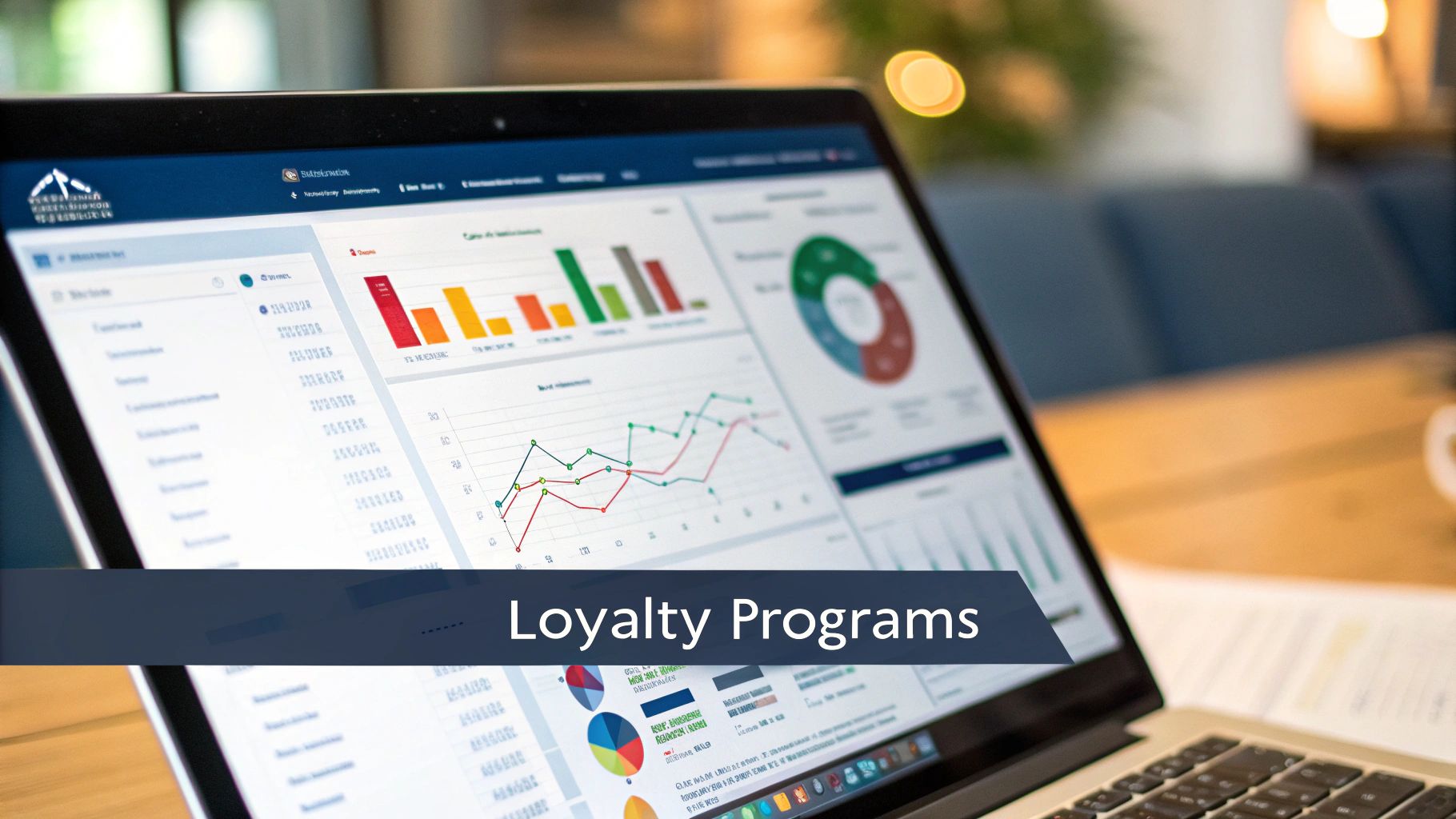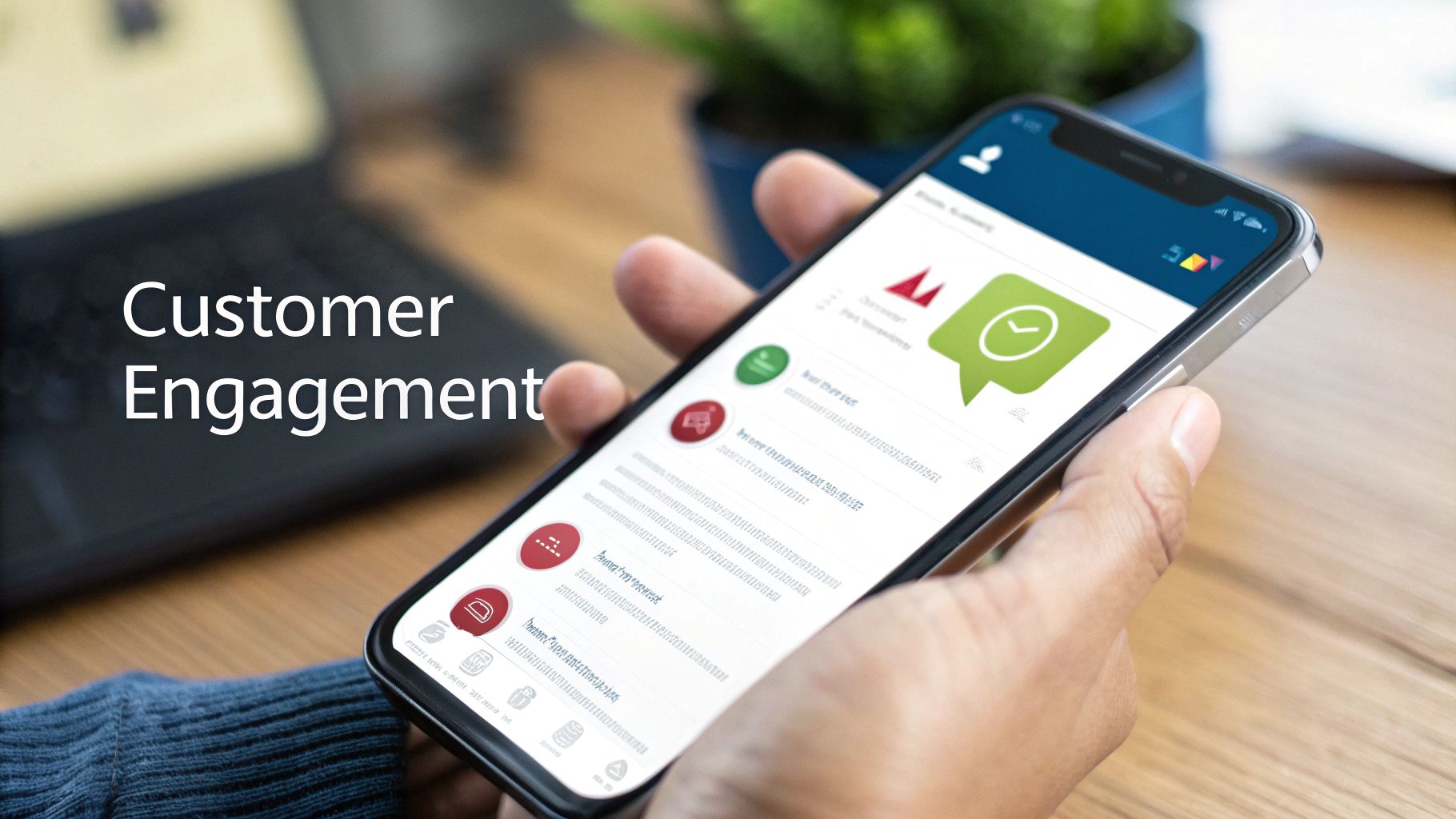Understanding the Business Impact of Customer Retention
Strong customer relationships drive business success. Just as a house needs more than just a foundation, a business needs more than just new customers - it needs loyal, repeat customers who form the core structure of sustainable growth. Let's explore why focusing on keeping customers matters so much for your business.
Why Retention Matters More Than You Think
Most businesses spend heavily on getting new customers, but often miss out on nurturing their existing customer base. The numbers tell a compelling story - finding new customers costs 5 to 25 times more than keeping current ones. This is simple math - existing customers already know and trust your brand, making them more likely to buy again.
Think about your local coffee shop. While flashy ads might bring in first-time visitors, it's the daily regulars who keep the lights on. These loyal customers don't just provide steady income - they become your best marketers, naturally recommending your business to others.
The Real Value of a Retained Customer
The financial impact of customer retention goes way beyond saving on marketing costs. Research from Harvard Business Review shows that boosting customer retention by just 5% can increase profits by 25% to 95%. This highlights why keeping customers matters so much - they spend more over time and cost less to serve. For more insights, check out these customer retention statistics.
Retention Across Industries
While core retention principles stay the same, each industry needs its own approach. Software companies might focus on smooth onboarding and quick support, while retail stores could build loyalty programs with member perks. The key is understanding exactly what your customers value most.
What works in one industry might flop in another. A personalized approach that fits your specific market and customer needs will bring the best results. Focus on building genuine relationships and delivering real value - that's what keeps customers coming back year after year.
Maximizing Customer Lifetime Value Through Strategic Retention

Growing a business requires both finding new customers and keeping existing ones happy. The real potential lies in Customer Lifetime Value (CLTV) - how much revenue you can expect from one customer over your entire relationship. Getting this right makes a huge difference to your bottom line.
Understanding the Components of CLTV
CLTV combines several key factors: how much customers spend per purchase, how often they buy, and how long they stay with you. Sometimes, the customer who makes small regular purchases over many years ends up being more valuable than one who makes a single big purchase. This shows why building real relationships with customers matters so much.
Strategies for Increasing CLTV
The best way to boost CLTV is to make customers feel special. Send them emails and offers that match what they like. Give them perks through a rewards program, like special discounts or early access to new items. Keep it simple but meaningful.
Great customer service makes a huge difference too. When you solve problems quickly and go above and beyond, customers stick around longer. A single positive interaction can turn someone from a one-time buyer into a regular customer who recommends you to others. Help them before they need to ask - share useful tips and resources. The numbers back this up: existing customers spend 67% more than new ones. Check out more data on this here.
Predicting and Influencing Customer Behavior
Pay attention to how customers shop and interact with you. Look at what they buy, what they browse, and how they respond to your marketing. This helps you spot who might leave and take action early. You could remind them about items left in their cart or suggest products based on what they've bought before. When you notice and respond to what customers need, they're much more likely to stay loyal and spend more over time.
Mastering Personalization for Enhanced Customer Loyalty

Effective personalization means more than just adding a customer's name to emails. It's about understanding each person's unique preferences and behaviors to create meaningful connections that inspire loyalty.
Beyond the Basics: Truly Personalized Experiences
Shoppers want to feel understood by the brands they choose. Smart companies analyze shopping patterns to recommend products that match individual tastes. For instance, a clothing store might suggest outfits based on past purchases or send style guides reflecting a customer's browsing history. These thoughtful touches show customers you pay attention to what matters to them.
Data-Driven Personalization: The Key to Scalability
Creating personal experiences for many customers requires solid data management. Companies use Customer Relationship Management (CRM) tools to track preferences and behaviors. Think of it like a neighborhood coffee shop where baristas remember your usual order - but at a much bigger scale.
You don't need complicated systems to start personalizing. Simple steps like grouping customers by purchase history help target emails and offers more effectively. Website activity and support conversations provide additional insights. Remember to be upfront about data practices - customers appreciate transparency. Studies show personalized emails boost customer loyalty by 33%. Learn more about personalization's impact on retention in this personalization research report.
Measuring the Impact of Personalization
Keep track of how well your personalization efforts work by monitoring key metrics: conversion rates, email click-throughs, customer lifetime value, and satisfaction scores. This data helps refine your approach and proves the value of personalization investments. Regular analysis ensures you're delivering experiences that truly resonate with customers and support business growth.
Creating Loyalty Programs That Actually Work
A well-designed loyalty program does more than just give out discounts. Modern customers want to feel a real connection with brands they support. The best programs go beyond basic points systems to create meaningful relationships.
The Psychology of Loyalty: More Than Just Rewards
Great loyalty programs understand what drives customer behavior. Members want to feel valued, trusted, and part of something special. Access to early product releases or members-only events makes people feel like true insiders. Smart brands also use purchase history to provide relevant recommendations that show they understand each customer's unique preferences.
Structuring Rewards for Maximum Impact
While discounts still matter, the most effective programs offer diverse rewards. Consider how airlines give priority boarding and lounge access to frequent flyers - these perks make status feel real and exclusive. Building a tiered system where bigger rewards unlock with more engagement encourages long-term loyalty.
Gamification: Making Loyalty Fun and Engaging
Adding game-like elements makes loyalty programs more exciting. Simple challenges, achievement badges, and progress tracking tap into people's natural competitive spirit. Think of how coffee shops use punch cards - getting that 10th stamp for a free drink is oddly satisfying. When members can share their achievements on social media, they become brand advocates.
Exclusive Experiences: Creating True Value
The best loyalty programs create special moments for members. This could mean VIP events, one-on-one consultations, or first access to new products. Research shows top programs can boost revenue from participating customers by 15% to 25%. These insights help brands better understand buying patterns and preferences. Learn more about loyalty program best practices here. By focusing on genuine relationships over pure transactions, you'll turn regular customers into true brand champions.
Building Customer Feedback Systems That Drive Growth

Effective businesses actively seek customer input rather than waiting for complaints. By gathering feedback early and often, companies can spot potential issues before they lead to customer losses and use those insights to fuel growth.
Why Proactive Feedback Matters
Getting feedback is like having an ongoing discussion with your customers. When you reach out first to ask for their thoughts, it shows you value their opinion and helps build trust. Something as simple as sending a quick "How was your experience?" email after a purchase can provide key insights while making customers feel heard. This back-and-forth creates a positive cycle where customer relationships get stronger and your business keeps improving based on their input.
Smart Ways to Get Real Customer Insights
Today's feedback tools go beyond basic surveys. Features built right into apps and websites let customers share thoughts in the moment, making it easy and natural. Watching social media conversations about your brand helps spot trends and concerns early. Using multiple feedback channels gives you a clearer picture of what customers really experience and value.
Implementing Voice-of-Customer Programs
A Voice-of-Customer (VoC) program helps you systematically collect and analyze feedback at every customer touchpoint. Here's how to build an effective program:
- Set clear goals: Know exactly what you want to learn
- Map key interactions: Identify the most important customer contact points
- Pick the right tools: Choose methods that match how your customers prefer to give feedback
- Take action: Use what you learn to make real improvements
Turning Insights into Strategic Advantages
The true value of feedback comes from using it to make smart business decisions. By looking at patterns in customer comments, you can spot exactly where to focus your improvement efforts. For instance, if multiple customers mention shipping delays, you know to prioritize fixing delivery processes. This data-driven approach helps you tackle the issues that matter most to customers. As your company grows, having good feedback systems in place ensures you can keep listening and responding effectively to customer needs.
Measuring and Optimizing Your Retention Strategy

Getting customers to stay with your business means more than just coming up with ideas - you need clear ways to track if those ideas work. By measuring the right things, you can see what's working and make smart changes based on real data.
Key Numbers to Track
Every business has different goals, but some essential metrics matter across all industries. The Customer Retention Rate shows what percentage of customers keep doing business with you over time. The Customer Churn Rate tells you how many customers you're losing - tracking this helps spot problems in the customer experience that need fixing.
Other important numbers include Customer Lifetime Value (CLTV), which estimates how much revenue you'll get from one customer over time, and Repeat Customer Rate, showing how many customers buy more than once. Purchase Frequency measures how often people come back to buy again, giving you insights into buying patterns and loyalty.
Building Clear Reports
Raw numbers aren't helpful unless you can understand them easily. Good reports should show your key metrics clearly so you can spot trends and make decisions quickly. If you notice more customers leaving one month, your reports should help you dig deeper to find out why - maybe there were product issues or customer service problems that need attention.
Spotting Problems Early
Smart data analysis helps you see which customers might leave before they actually do. Like a doctor catching early warning signs, this lets you step in with targeted offers or extra support to keep valuable customers happy. When you can predict and prevent problems, you save important customer relationships and increase long-term value.
Measuring Return on Investment
Finally, track how your customer retention work affects your bottom line. Connect your metrics to actual revenue growth to see what's worth the investment. For example, if a loyalty program leads to more repeat purchases, calculate exactly how much extra money it brings in compared to what you spent. This helps you spend wisely on efforts that really work.
Want to discover more about building true freedom through entrepreneurship and astute investments? Tune in to The Covered Call Podcast, where we explore these concepts and more. Learn more about achieving personal and financial liberty at thecoveredcallpod.com

